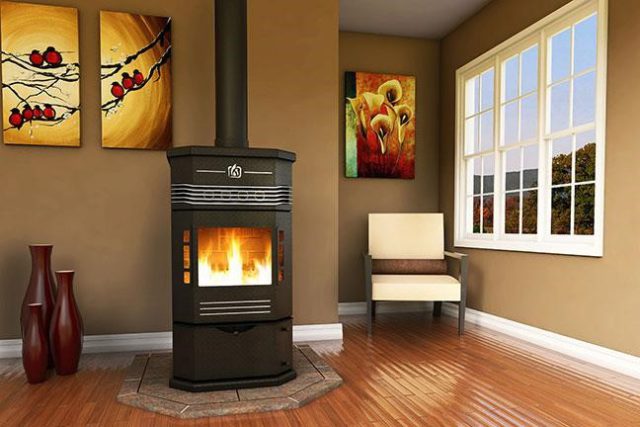Global warming is a quite common word that we have been using for more than a decade. However, people are getting wiser now. And, they prefer to take care of nature as well as taking a lease on the expenditure on energy. According to the recent statistics conducted by leading energy distributors, more than 60% of internet users want to go green when it comes to heating and cooling the home. We know that it’s not easy to switch to eco-friendly technology for cooling and heating from a conventional one.

But, trust us, the change is for good. The prime advantage of green heating and cooling systems is that you can save up on your monthly utility bills. Additionally, it won’t lead the Earth to the vulnerable edges of no choices with sustainable energy.
Related: Top Solar Energy Gadgets for Eco-Friendly Shopping
Therefore, if you are ready for the change, but can’t decide which one will benefit you the most, then we have got some terrific options for you. These are the best choices for shifting towards green energy substitutes. Let’s have a look at them and go with the convenient one.
1. Geothermal System
The main perk of a geothermal energy system is that you can deploy it for both home and business purposes. There is no need to mention how much it costs to heat and cool your living premises. Fossil fuels are expensive, and they are non-renewable in nature.
On the other hand, renewable energy sources can enhance the capacity of HVAC systems. Additionally, they cause unwanted pollution, and it triggers the greenhouse effect. Thus, it’s time to move on from non-renewable energy sources and switch to renewable ones.
What is geothermal energy? Well, Earth spontaneously produces energy with the help of heat, water, and steam. The ideology of geothermal energy is that you can exchange the heat or temperature for making your home hotter or cooler.
Heat pumps are used to keep the temperature constant according to the temperature of the geothermal walls situated under the ground. The heat pump can make your home or business cooler when it’s summer, and you can experience vice versa in winter. The refrigerant or water inside the geothermal system is responsible for the heat exchange to work in reverse.
2. Pellet Stoves
Finding the right stove to control the temperature of the home is not easy. But the credit goes to the pellet stoves that can work according to the temperature rise and fall at your home. If your home heating system is still using wood stoves, then you can comfortably switch to pellet stoves. Pellet stoves are considered to be renewable in nature, and you can use sawdust and switchgrass as resources.
In addition to this, pellet stoves are more reliable than wood stoves. For example, they don’t take much space as compared to pellet stoves. It’s obvious that it would take more space to store wood.
However, there’s one small hiccup when it comes to pellet stoves and their efficiency. Small homes that are less than 1500 sqft that can easily make use of pellet stoves. Otherwise, you need to consider installing two or multiple pellet stoves as per the space available in your home or office.

3. Passive & Active Solar Systems
Solar cells are quite popular, and the professionals of Electrician services in Dubai have confirmed it. The advantage of solar or photovoltaic cells is that you can convert solar energy into electricity. After that, the electricity is ready to be used for heating up, cooling down, or lighting your home.
However, active solar cells can only convert 10% of the available energy from the sun. In addition, solar cells and installation are hefty. It will take around 15 years to recoup the investment required for solar cell installation and management.
Well, there are cheaper options in the market, too. These solar systems use fluids such as water and air through a collector. On the other hand, passive solar systems can be utilized as air conditioners and furnaces. It takes the help of the building’s floors, windows, and walls to radiate or store the heat.
However, you will still require mechanical equipment for making use of passive solar energy. Homeowners have to acquire radiant flooring or a forced-air system to take care of the heating and cooling of the house.
4. Wind Power
Are you thinking that you have to take the help of windmills to regulate the temperature at your home? The good news about wind power is that you can go for a small wind turbine to utilize the power of wind at your home. Designed and crafted by the students of Oregon University, the small wind turbine is ready to produce energy.
The turbine will rotate based on the wind direction and the attached magnetic components will warm up the copper plate. In addition, water will be pumped through the copper coil tube. The produced heat can regulate the temperature all around the home, whereas you can use hot water for domestic use. We think that the rooftop of every house has sufficient space for installing the small wind turbine.

5. Hydronic Heating
You might have encountered old radiators in your grandparents’ house. The fact is that hydronic heating systems are nothing new in the energy industry. Instead, they have been around us for more than a decade. This particular system uses hot water pipes to run through radiators, under floorboards, and baseboards to keep the temperature optimum.
To be specific, a hydronic system is a hybrid heating system that uses geothermal and solar energy to keep your home a perfect place for living. The liquid used in the hydronic system can be any kind of antifreeze liquid or water. You have to go for plastic tubing in order to radiate the heat throughout your home. Major three heat exchange rules are applied for hydronic systems and they are convection, conduction, and radiation.
6. Biodiesel
This might sound weird as a way of a green heating and cooling system for your home. However, professionals have confirmed that you can use biodiesel as an alternative for fuel oil. When the prices of available fuel oils are striking higher and higher day by day, biodiesel is a much more convenient option.
Biodiesel or biofuels come from crops such as wheat, soybeans, sugarcane, and corn. Undoubtedly, they are way more sustainable than conventional fuels required for home heating and cooling systems. So, you can switch to biodiesel to make the pollution vanishing and the efficiency disrupted.
Summing up
Earth requires more and more renewable energy sources to prevent pollution. The transition can’t happen overnight. But there’s a bright hope that people are understanding the requirements and impact of green heating and cooling systems. They might be a bit costly at the initial stage, but they will provide you with longer and healthier results. Thus, you can save lots of money after a certain time. So, check your requirements for energy and switch to a convenient green energy option.
